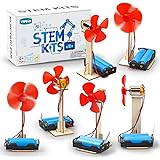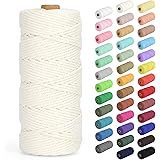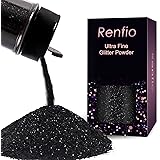Transform Your Garden with Cheap DIY Edging Ideas
Are you dreaming of a meticulously manicured garden but find professional landscaping costs daunting? Many homeowners struggle with defining their outdoor spaces without breaking the bank. The good news is, creating beautiful, functional garden borders doesn’t have to be expensive or overly complicated. The video above showcases an incredible array of [EASY] Top 80 Cheap DIY Edging Ideas, demonstrating just how accessible stunning garden design can be.
Imagine your vibrant flower beds perfectly framed, your pathways neatly separated from your lawn, and your entire outdoor space gaining a polished, intentional look. This can be achieved with smart, budget-friendly DIY edging solutions. This article will delve deeper into the world of affordable garden borders, expanding on the concepts in the video and providing practical insights to help you get started on your own cheap DIY edging project.
Why Garden Edging Matters for Your Outdoor Space
Garden edging, while often overlooked, plays a crucial role in both the aesthetics and functionality of your outdoor areas. It creates a clear visual boundary, elevating the overall design of your landscape. Imagine a crisp line separating your lush green lawn from your colorful flower beds; this simple addition instantly enhances curb appeal and gives your garden a professional finish. Edging defines spaces, making your garden feel more organized and purposeful.
Beyond its visual appeal, effective landscape edging serves several practical purposes. It acts as a barrier, preventing mulch, soil, and gravel from spilling onto pathways or lawns. This helps maintain the integrity of your garden beds and reduces the need for frequent tidying. Crucially, a well-installed border can also help deter grass and weeds from encroaching into your cultivated areas, saving you significant time and effort on weeding. Good edging streamlines maintenance, protecting your plants and keeping your garden tidy.
Budget-Friendly DIY Garden Edging Solutions
The beauty of DIY garden edging lies in its versatility and the potential for cost savings. You don’t need expensive materials or specialized tools to create attractive and functional borders. Many effective solutions can be found using reclaimed materials or inexpensive new items readily available at local hardware stores. Let’s explore some popular categories for affordable garden borders.
Reclaimed and Natural Materials
Utilizing reclaimed or natural materials is one of the most eco-friendly and budget-conscious approaches to cheap DIY edging. These options often add unique character and a rustic charm that store-bought items simply cannot replicate. Think creatively about what resources might be available around your home or local area.
- **Reclaimed Wood:** Old fence posts, railway sleepers, pallets, or even fallen branches can be repurposed into charming garden borders. Imagine timber sections laid end-to-end for a rustic, natural look around your vegetable patch. This material is incredibly versatile and can be cut to size, stained, or left natural to weather over time.
- **Natural Stone/Rocks:** Collection of various sized rocks or stones from your property or local landscape (ensure local regulations allow collection). These can be dry-stacked to create a permeable, organic border that blends seamlessly with nature. Consider flat stones for a more formal stacked appearance or irregular rocks for a wilder, more informal design.
- **Bricks or Pavers (Reused):** Scour local classifieds or construction sites for free or cheap used bricks. These classic materials offer a timeless aesthetic and can be laid in various patterns—vertically, horizontally, or angled—to create a sturdy and attractive edge. They provide excellent weed suppression and a clean line.
- **Seashells or Glass Bottles:** For a truly unique and whimsical border, consider embedding collected seashells or inverted glass bottles. Imagine a shimmering line of green or brown bottles catching the sunlight around a whimsical fairy garden. This offers a highly personal touch and makes use of items that would otherwise be discarded.
Inexpensive New Materials
If reclaimed materials aren’t your preference or readily available, several new materials offer excellent value for money. These options are typically easy to install and provide a clean, consistent look. They offer a good balance of cost-effectiveness and durability, making them popular choices for DIY enthusiasts.
- **Plastic or Rubber Edging:** Available in rolls, plastic or recycled rubber edging is one of the most affordable and easiest to install. It’s flexible, making it ideal for curved garden beds, and comes in various heights and colors. This option is particularly effective as a simple weed barrier, providing a neat division between lawn and garden.
- **Metal Edging (Thin Galvanized Steel/Aluminum):** While slightly more expensive than plastic, thin metal edging offers superior durability and a sleek, modern aesthetic. It’s very effective at preventing grass roots from spreading and creates a sharp, clean line. The material can often be bent for gentle curves, providing a sophisticated finish to your landscape.
- **Treated Timber Boards:** New treated timber boards, readily available at hardware stores, can be used to create raised garden beds or simple, clean linear borders. Imagine crisp wooden planks forming a rectangular frame around your herb garden. This material is durable against rot and pests, ensuring a long-lasting border.
- **Concrete Pavers/Blocks:** Standard concrete pavers or small retaining wall blocks are relatively inexpensive and can be laid to form a robust and long-lasting border. They provide a solid barrier against grass and are excellent for creating more formal garden designs. These can also be painted or stained to match your outdoor décor.
Key Considerations for Your DIY Edging Project
Before you dive into installing your chosen cheap DIY edging, a little planning goes a long way. Thinking through a few key aspects will ensure your project is successful, durable, and meets your aesthetic goals. Careful consideration now can save you time and effort in the long run, ensuring your garden borders look fantastic.
Planning and Design
The initial design phase is critical for achieving a cohesive and functional garden. Start by clearly envisioning the purpose of your edging. Is it primarily for aesthetics, weed control, or containing mulch? The function will often dictate the best material choice.
- **Layout:** Use a garden hose or string to outline the desired shape of your garden beds or pathways. Walk around and view it from different angles to ensure the curves and lines are pleasing. This visual aid helps you finalize your design before any digging begins.
- **Material Matching:** Consider how your chosen edging material will complement your home’s architecture and existing landscape. Imagine a rustic log border enhancing a cottage garden, or sleek metal edging fitting a modern minimalist design. The right material enhances the overall harmony of your outdoor space.
- **Height and Depth:** Determine the appropriate height for your border. For basic weed control, a few inches above ground might suffice, while a raised garden bed will require a taller structure. Ensure enough depth is available to securely anchor the material, preventing shifting over time.
Installation Tips
Proper installation is crucial for the longevity and effectiveness of your cheap DIY edging. While the process will vary slightly depending on your chosen material, some general principles apply across the board. These tips will help you achieve a stable and attractive finish for your garden borders.
- **Preparation:** Clear the area of weeds and debris. Dig a shallow trench along your marked line; the depth and width will depend on the edging material. For instance, bricks will require a wider, shallower trench than individual stakes.
- **Leveling:** Use a level to ensure your edging is straight and even, especially for rigid materials like bricks or timber. Uneven edging can look unprofessional and may allow grass to creep underneath. A consistent level contributes significantly to a polished appearance.
- **Anchoring:** Secure your edging material firmly. Stakes are often used for flexible plastic or metal edging, driven into the ground every few feet. For heavier materials like stones or bricks, a gravel base or even a thin layer of concrete can provide stability.
- **Weed Barrier (Optional but Recommended):** Consider laying down landscape fabric beneath your edging, especially in garden beds. This additional layer significantly enhances weed suppression, reducing future maintenance. Ensure the fabric is properly trimmed and secured.
Maintenance and Longevity
Even cheap DIY edging requires some minimal maintenance to remain effective and attractive over time. Understanding these aspects will help you select materials that align with your willingness to perform upkeep. Your choice of material impacts how much effort is needed to preserve its pristine look.
- **Regular Inspection:** Periodically check your edging for signs of shifting, damage, or wear. Reclaimed wood might rot over many years, while plastic can become brittle in harsh sun. Early detection of issues prevents bigger problems down the line.
- **Cleaning:** Keep your edging free of soil, grass clippings, and debris. A quick sweep or rinse can maintain its clean appearance. Some materials, like natural stone, might benefit from occasional scrubbing to prevent moss buildup.
- **Repair and Replacement:** Be prepared to repair or replace sections as needed. A simple re-leveling of a shifting brick or replacing a broken timber piece can easily restore your border’s integrity. The affordability of these DIY options makes repair much less daunting.







